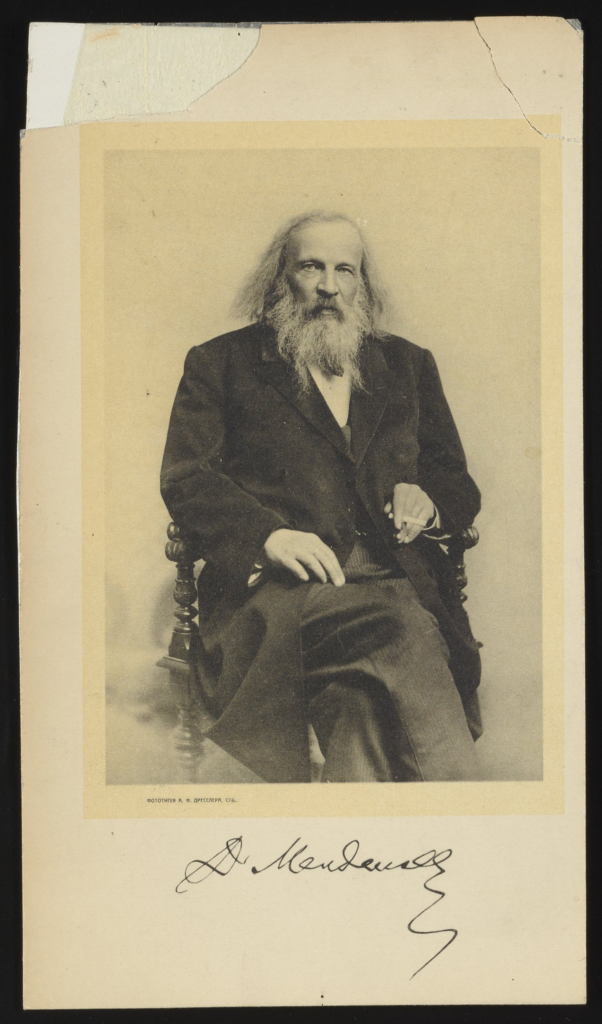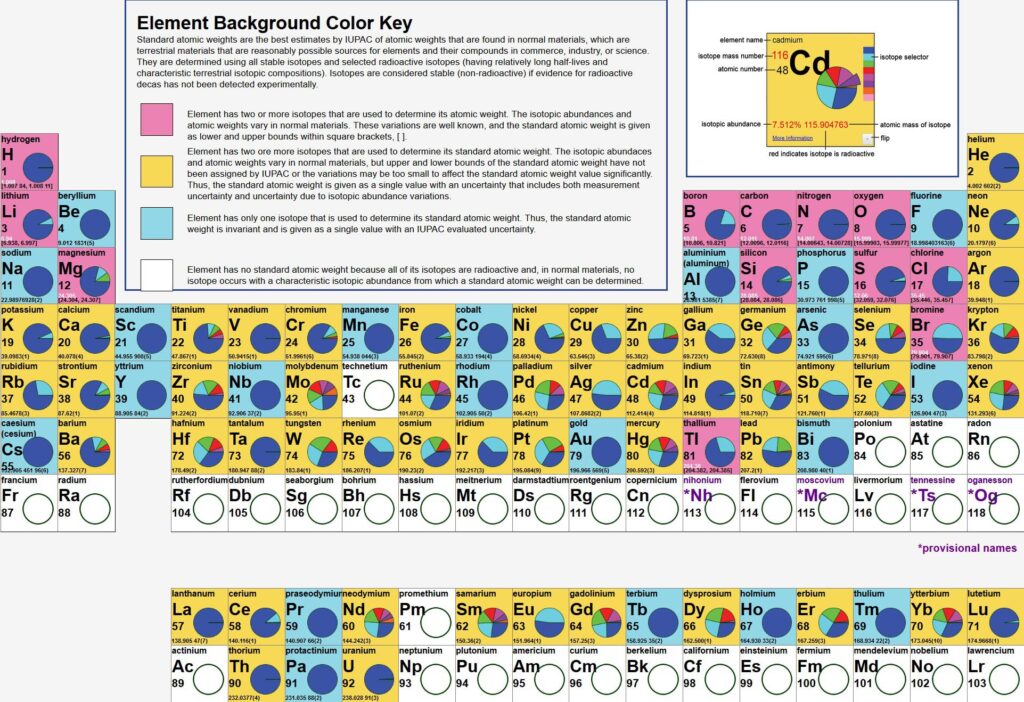2019 marked the 150th Anniversary of the Periodic Table, created in 1869 by Dmitri Mendeleev.

Dmitri Mendeleev (1834-1907) was born in Siberia, one of as many as 17 children. He is most famous for finding a way to arrange chemical elements (according to their atomic weights, or the number of protons in their atomic nuclei) that resulted in a table. This table demonstrated repeating patterns of elemental properties. He reportedly drafted his table on February 17, 1869 after a dream. Others published similar elemental arrangements, but his was the first. He left gaps in the table where elements that fit had not yet been discovered—and he correctly predicted the properties of gallium, scandium and germanium, which had all been identified by 1889. In total, he predicted the existence of 10 elements, two of which were not found, due to errors in atomic weight information available at the time. His “periodic table” has become invaluable, helping to explain how elements are related, how and why they react, and why they have certain properties. The expanded version with 118 elements is well known to all chemistry students and aficionados.
Mendeleev’s story goes beyond his famous table. He dealt with many hardships, including the death of his father when he was 13, and the loss of the family glass business when he was 15. While studying to become a teacher, he began to publish original research papers, but in 1855, he was diagnosed with tuberculosis and given two years to live. He pushed on. After meeting with international chemists at a conference in 1860, he began to worry his colleagues would fall behind with no authoritative texts in Russian, so he wrote the first Organic Chemistry textbook in that language in just 61 days. He is also credited with bringing the metric system to Russia. Mendeleev studied hydrodynamics, meteorology, geology, and economics, and his interest in petroleum led to the founding of the first oil refinery in Russia. Mendeleev was nominated for a Nobel Prize, but never received one. Element #101, discovered in 1955, was named for him, as is a crater on the far side of the moon.
Sources: https://www.newscientist.com/people/dmitri-mendeleev/
https://www.famousscientists.org/dmitri-mendeleev/
https://www.thefamouspeople.com/profiles/dmitri-mendeleev-6324.php
http://www.softschools.com/facts/scientists/dmitrti_mendeleev_facts/1508/






